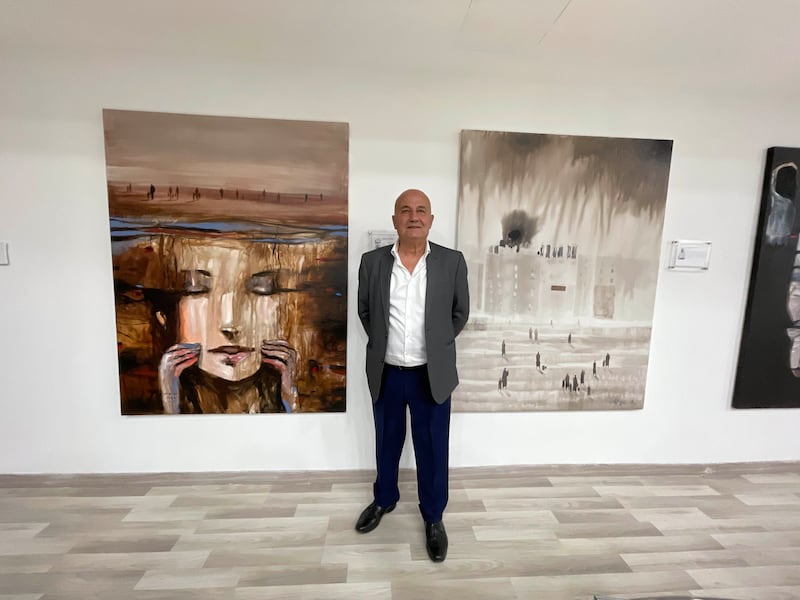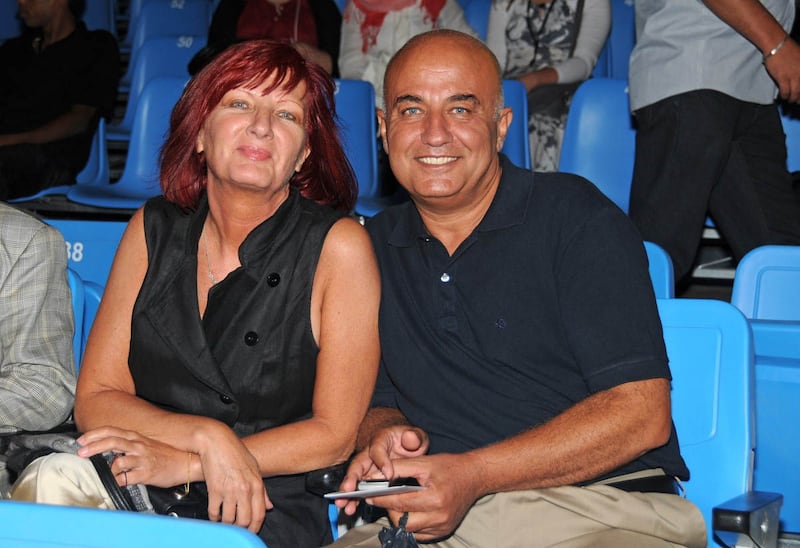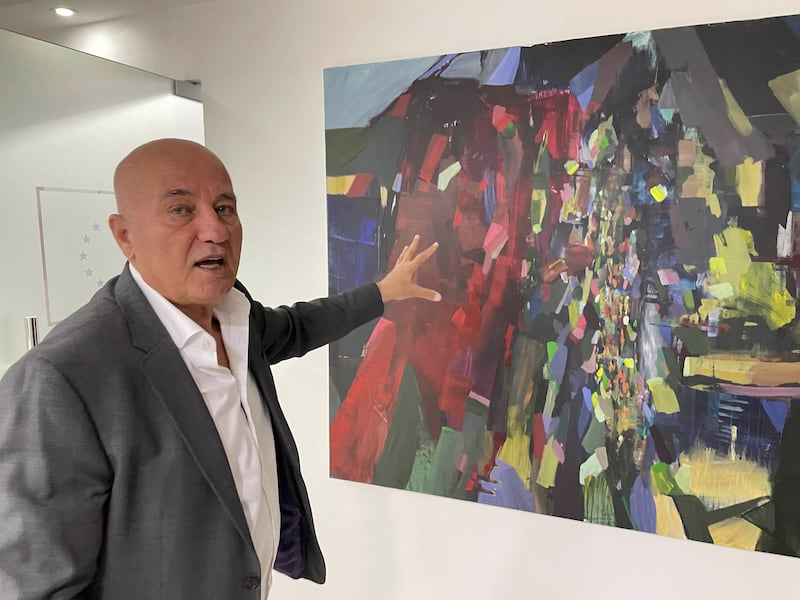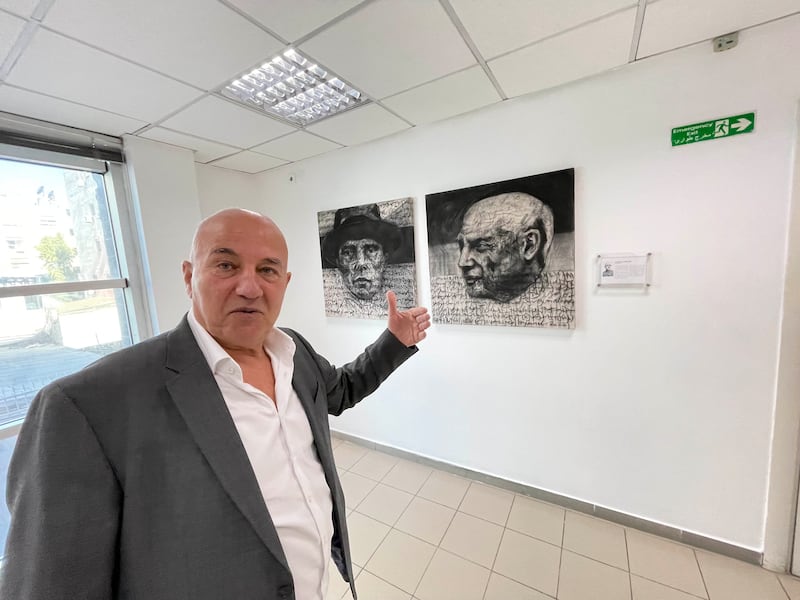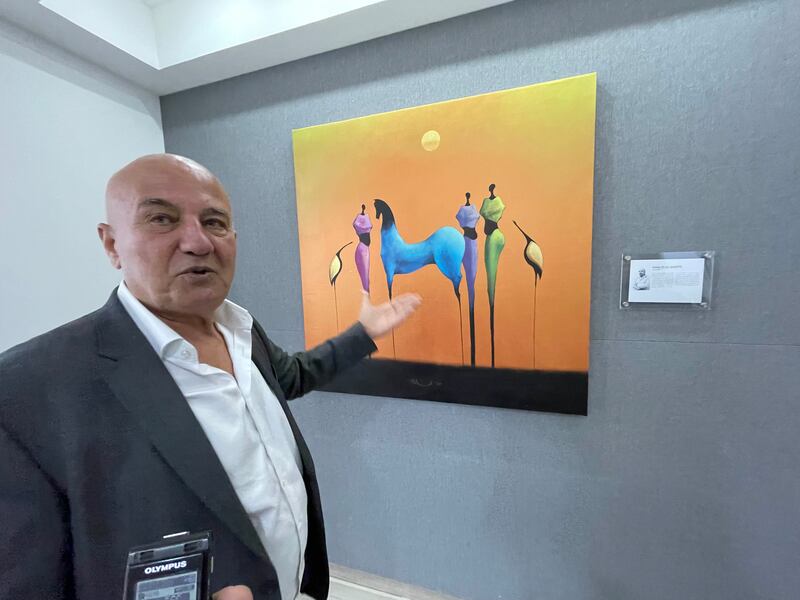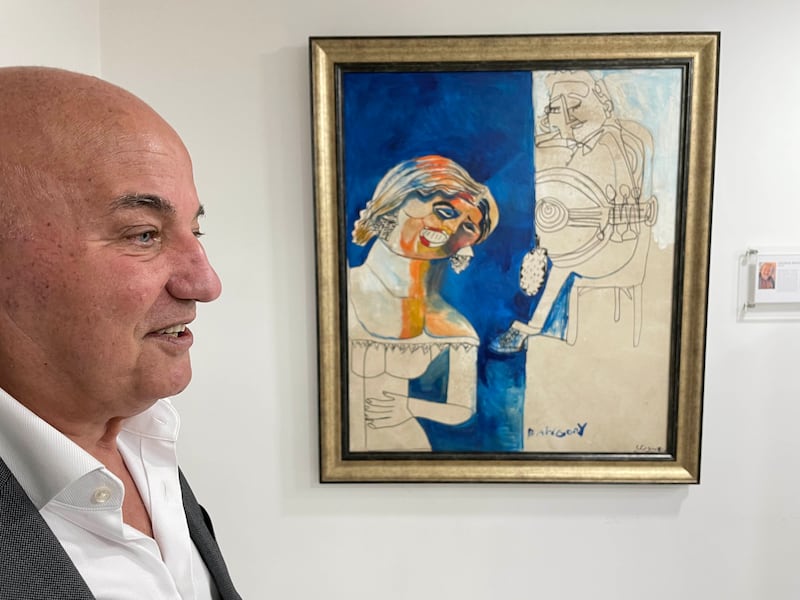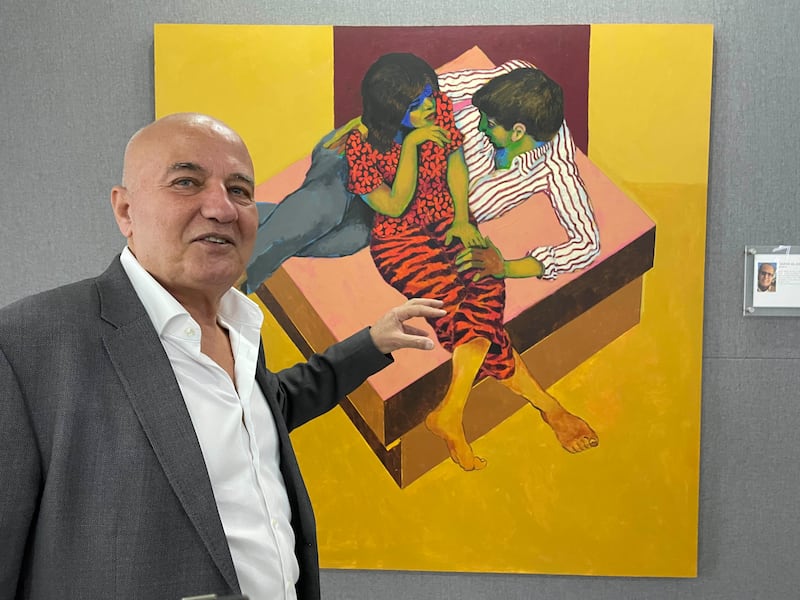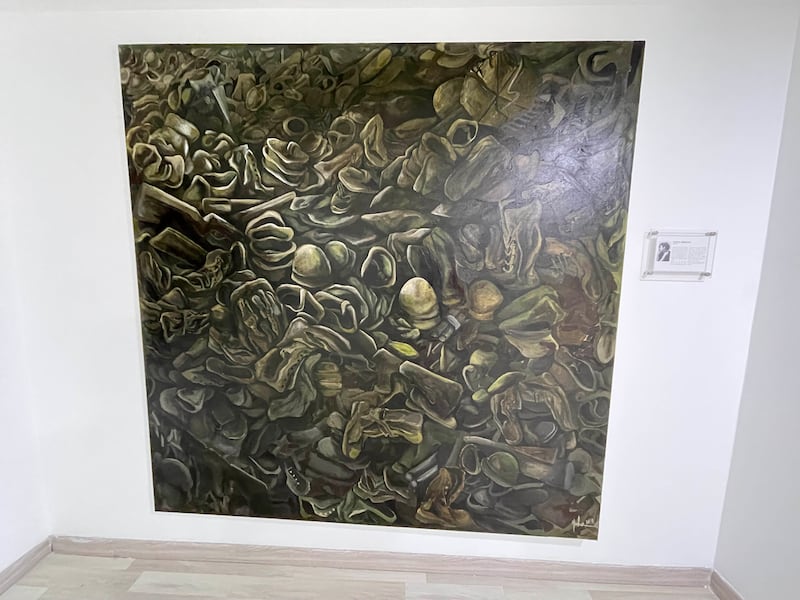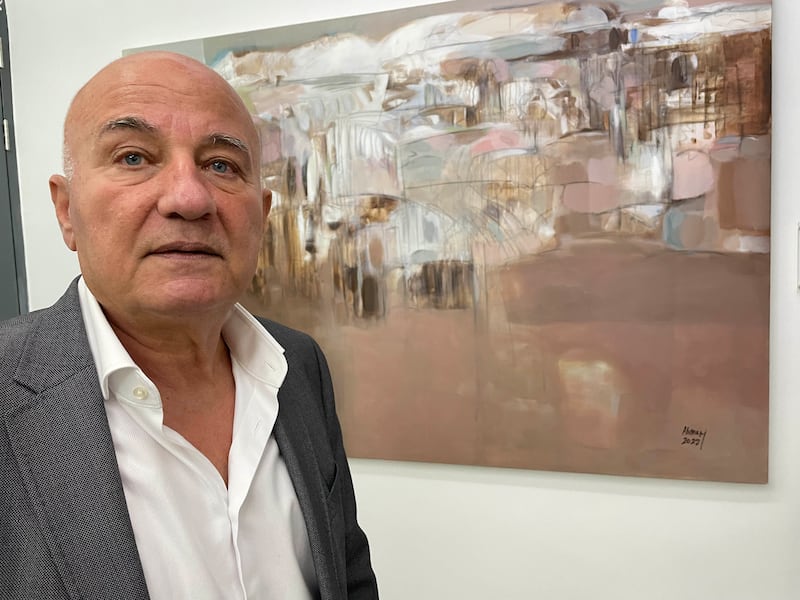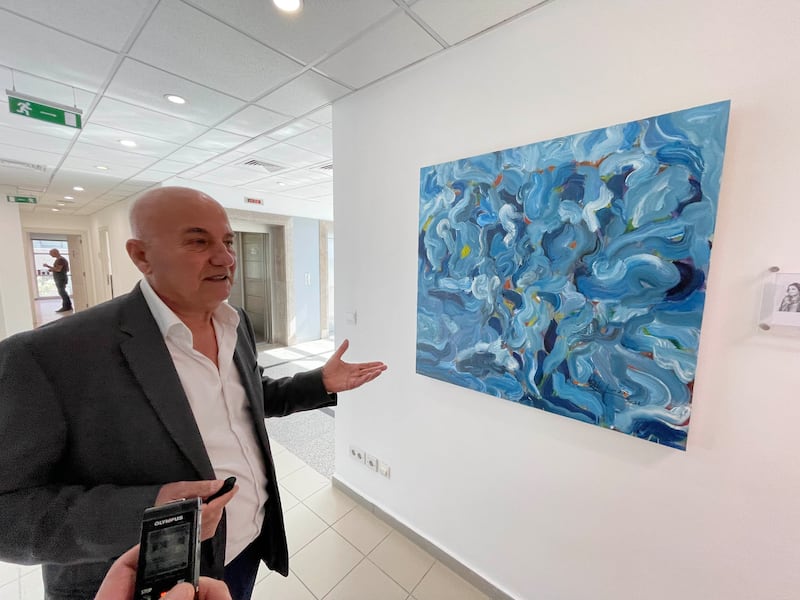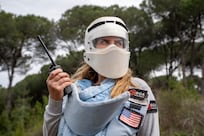Art exhibitions were a rarity in Amman when the Romanian wife of Jordanian civil engineer Hasan Wahbeh took him with her to one such event in the mid 1980s.
He bought two landscape paintings by the Jordanian artist Mohammad Boulis. They became the nucleus of his collection, comprising hundreds of Arab contemporary works.
“They were not strong paintings, but they were my start,” says Mr Wahbeh.
Part of the collection that he and wife Ica, a veteran journalist, have amassed since then was put on public display for the first time this month at the European Union mission in Amman.
The idea came from EU Ambassador Pierre-Christophe Chatzisavas, a friend the couple who believed it would be a way for the hundreds of people who come to the building every month to be exposed to Arab art.
The year-long exhibition offers clues about how Jordan became a destination for Arab artists despite the late development of art in the kingdom compared to the rest of the Levant.
In Lebanon, and even socialist Syria and Egypt and Iraq, exposure to the West, particularly in the aftermath of the Second World War, helped develop art movements and move artists from mainly calligraphy and the drawing of icons to abstract and other schools.
Before the Lebanese civil war from 1975 to 1990, Beirut, with its open society and location on the Mediterranean, was the cultural capital of the Arab Middle East, attracting the area’s top artists and writers, as well as inflows of hard currency from the Gulf.
Art culture was so ingrained that Youssef Beidas, the country’s top financier, invited Helen Khal, a pioneer of Lebanese modern art, to exhibit at his Intra Bank in the early 1960s.
Several women artists feature in the exhibition of works from Hasan and Ica Wahbeh's collection. Among them is Olfa Jomaa, from Tunis, whose painting of an olive tree appears to be growing from and into infinity . Maha Ibrahim, from Egypt, painted a mangled aftermath of a war in green camouflage colours.
Jordan, in comparison to Lebanon, lacked the purchasing power and an established arts culture. The kingdom's society is also traditionally more religiously conservative, and more so since the 1980s, although there were private efforts to develop the arts.
But an influx of Iraqi, Syrian and Lebanese artists over the past four decades – fleeing upheaval, dictatorship, or both, in their homeland – has improved the kingdom's art environment sharply.
“The internal situation in these countries turned Jordan into an important centre of Arab art,” says Mr Wahbeh.
Many of the Iraqi painters who came to Amman after the 1990-1991 Gulf war sold their works cheaply as they tried to raise funds to emigrate to the West, he says.
“In a few years many of these painters had left to Europe."
One of the first efforts to spread the arts in Jordan was in the early 1950s, by Hanna Qayyaleh, an ophthalmologist.
He set up a small arts and music centre in Amman and brought in Armando Pron, a violinist and self-taught painter, to teach there.
One of Pron’s students was Mohanna Durra, the son of a prominent Lebanese immigrant, who in addition to becoming one of Jordan’s most beloved painters served as an ambassador in Moscow and other countries.
The exhibition features one painting by Durra, in shades of blue, depicting a village, rocks and sky, a typical theme of his work.
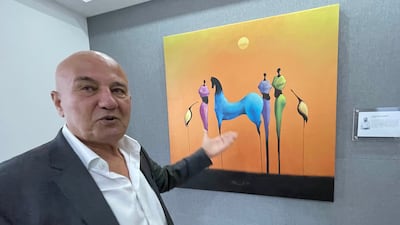
Mr Wahbeh, who was friends with Durra, says he was a funny, entertaining conversationalist whose knowledge went vastly beyond art.
"He was a great personality,” he says.
Mr Wahbeh studied engineering in Romania in the late 1970s before returning to Jordan and setting up his own construction firm. His business enabled him to finance his collection, although he has sometimes borrowed money to buy pieces.
“I became addicted,” he says
The collector has built personal ties with most of the artists whose work he has bought. Many painters in Jordan and who come to the kingdom call him to help chose works for exhibitions they are preparing.
Mr Wahbeh also sponsors symposiums and artist residencies in Jordan, in partnership with the Rowaq Al Balka art gallery, in the Amman suburb of Fuheis.
The gallery is run by Jordanian painter Fadi Daoud, who has two works in the exhibition. One of them depicts the biblical characters Cain and Abel eating watermelon.
Daoud’s work developed significantly after he obtained a master's degree in Florence, says Mr Wahbeh, who considers him one of the top living Jordanian painters.
Among Arab artists who came recently to Jordan was Khalid Al Shatti of Kuwait. He was among 12 painters Mr Wahbeh invited to Fuheis in December to produce work about the Gaza war, on the condition that the paintings do not depict bloodshed.
Mr Al Shatti painted a two-tone work, with a black sky, and figures on rooftops of buildings. People area standing in an empty landscape.
He has another work on display, of a blue horse with a black head, and only two long, thin legs, against an orange backdrop.
“It is Surrealist. The horse is shown as having pride," says Mr Wahbe.
In a painting by Saudi artist Abdullah Al Ahmari, the lower half is black while the top half is densely packed with depictions of a city, trees, and mountain. Mr Al Ahmari has his own gallery in Riyadh.
After a long period of closure to outside cultural influences, the situation "has been reversed 180 degrees" in Saudi Arabia, because of opening initiated by the Crown Prince, Mohamed Bin Salman, Mr Wahbeh says.
"They started spending heavily on the arts," says Mr Wahbeh.
He predicts that the next Middle East art boom will come from Saudi Arabia, after prices of Levant modern art skyrocketed in the last 15 years.
